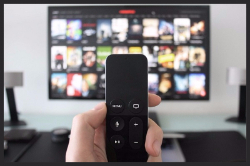The Rise of the Planet of the Smart TVs

Smart TVs are everywhere. Or, at least, will be very soon. A recent study by eMarketer showed that showed that over 168 million people will use connected TVs in the US this coming year, with smart TV usage accounting for half of these – a figure almost 31% higher than in 2017, with the rapid growth set to continue.
ACR and the World of Tomorrow (and Today)
What does this mean for brand managers, marketers and agencies playing in the TV advertising arena? Well, one of the big opportunities the rocketing number of smart TVs presents is the sheer amount of granular insights that can be gathered on audiences’ TV viewing behavior. Smart TVs, due to the development of Automated Content Recognition (ACR for short), can now recognize what a TV is showing. In other words, there is no guessing anymore as to whether a particular piece of content was shown on a specific device.
And?
Knowing what a TV has shown is one thing, but being able to link that device to a household is another. Through the use of IP address-mapping techniques, however, some vendors are able to do just this, as well as tie other mobile devices to the same household. All of this means cross-platform (TV and online) campaigns can begin to really work as a combination through better-defined audience targeting, and assessing TV’s impact on consumer behavior is now a much more data-driven process.
Sources of data
There are some things for marketers to keep in mind when considering providers however. Scale and privacy issues may crop up, for instance. Players in the market source their TV data in different ways, but the main two options stem from data collection via apps installed on users’ devices, and chips built into the smart TVs themselves. The difference is that the former relies on ‘listening’ to content being shown on nearby TVs in order to understand what is being shown, whereas the latter recognizes the content via the TV itself having an understanding of what it is showing. Both approaches can have merit, but there are issues of scale and privacy for the wary traveler (see: marketer) to keep abreast of.
Scale is the first point of call, with it being an obvious advantage to be able to know, on a definite basis, whether a TV has shown a household particular content. ACR tech built into the TVs means the TV will know what it has displayed automatically whenever it is turned on. However, apps that rely on audio recognition often require the user to have the app open to do this – an obvious problem if reaching millions of households means all of those people need to be using said apps precisely when the content you are looking to recognize is displaying on TV. Some operate quietly in the background, but privacy may become a big concern on this front.
TV manufacturers are now being set a high standard by the Federal Trade Commission when it comes to being very explicit about how they collect and use viewing data. This means that any data collected via built-in ACR chips is subject to very stringent opt-in rules. Apps that rely on listening (either while the app is open or running in the background) are not yet subject to quite the same set of rules (at least if they’re on Android) – but may yet be. Last year the CTD alerted the FTC to a technology called Silverpush, which used this audio recognition ability to track users TV viewing, and called out the the fact that TV viewers are not made aware of the apps that use this tech. Smart marketers may do well to remain aware that regulators are keeping a hawkish eye on this area and make sure their vendors adhere to best-in-class criteria when it comes to user privacy and opt-in processes. Should advertisers’ data sources suddenly come under this kind of scrutiny, it could disrupt campaigns or result in messy legal entanglements.
Where to from here?
ACR tech has the potential to provide brands with an incisive new method of evaluating TV performance and informing campaigns. The reach of this kind of tech is only set to grow, meaning the treasure trove of TV data available will likely increase substantially. But caveats exist, which means that finding providers who adhere strictly to the highest standards as they pertain to privacy is an absolute must.
